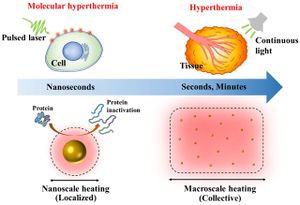CH391L/S12/HostOrganisms
Host Organism Chassis
Introduction
Synthetic biology tends to focus on the assembly of defined parts and modules into novel circuits that perform some interesting or useful task. However, with the exception of in vitro transcription/translation systems, none of these complex constructions exist on their own, but rather in the context of a host cell and all of its cellular machinery and components. As a result, genetically identical genes and constructs will display different behavior in the context of different host cells. For this reason, understanding, constructing, and evolving host strains (described as "chassis" in synthetic biology jargon),is crucial to the development of reliably functioning biological systems.
Chassis Organisms
Escherichia coli: Escherichia coli is a gram-negative bacterium found in the human gut and a model organism in biological engineering research. It is the most intensively studied prokaryotic model organism, is easily transformed, has a rapid doubling time, and is a biosafety level 1 organism. All of these characteristics make it ideal for genetic engineering.
Bacillus subtilis: B. subtilis is a gram-positive model organism. It is easily transformable and its genome has been sequenced. It forms spores when exposed to stressful environments, which can make it difficult to kill with strategies often employed to kill bacteria.
Saccharomyces cerivisiae S. cerivisiae is a species of yeast used commonly in brewing and baking. It is eukaryotic, has a diploid and haploid stage of its life cycle, and is among the most intensively studied single-celled eukaryotic model systems.
Mycoplasma genitalium: Mycoplasma genitalium is a small parasitic bacterium that lives on the ciliated epithelial cells of the primate genital and respiratory tracts. M. genitalium is the smallest known genome that can constitute a cell, which makes it an interesting subject for the study of minimal genomes.

Genome Reduction
One approach to creating more reliable, efficient host organisms for synthetic constructs is the reduction of the genome to eliminate extraneous genes, mutagenic mobile elements, and other unnecessary or destabilizing factors. This can be viewed as a form of reverse engineering of extant strains.
Systematic Genome Reduction
One natural approach to engineering strains with a reduced genome is to systematically identify and delete regions of the genome not necessary for host cell survival. Posfai et al. created the MDS strains (multiple deletion strains) by aligning the genomes of multiple genomes of E. coli, identifying regions which were absent in multiple strains, and deleting them via Lambda Red recombination. All IS elements were removed as well, lowering the mutation rate and increasing the stability of genetic constructs introduced into the cell. The strain had comparable growth rate compared to wild type.
Selection for Reduced Genome
Long-term evolution of strains under the correct conditions could select for a genome of minimal size. Such conditions may include growth in rich media lacking sugars to favor the loss of biosynthetic pathways or sugar metabolism operons, growth in structured environments which favor a smaller cell, or growth under other conditions which favor the loss of unnecessary genes.
Minimal Genome Synthesis
Another approach is the synthesis of a minimal, designed genome from scratch using DNA synthesis technology and the transformation of this genome into cells to create a viable, novel, synthetic organism. This approach can be viewed as forward engineering of a novel organism, but would likely be informed by studies which determine the minimal set of genes necessary for a living organism.

Mycoplasma mycoides Synthesis
Gibson et al synthesized the first artificial cell by generating the Mycoplasma mycoides genome from digitized genome information and transforming it into Mycoplasma capricolum cells devoid of genomic information. These cells were capable of continuous self-replication and were identified by "watermarks" inserted in the genome. This technology could be utilized in the future to create cells with novel and useful properties from scratch.
Ligation-Based Methods
In ligation-mediated assembly, the synthetic gene or DNA fragment of interest is broken up into individual overlapping DNA oligonucleotides that cover both strands of the eventual DNA duplex. In contrast to PCR-based methods of gene synthesis, there are no gaps introduced in either strand during design, but rather the oligonucleotides completely reconstitute the eventual DNA target.
The oligonucleotides are chemically synthesized and phosphorylated at their 5' ends using purified kinase in an in vitro reaction. After complementary oligo fragments are annealed using using thermal cycling, purified DNA ligase is added to the reaction in order to splice together the 3' OH and 5' phosphate gaps on each backbone.